What is natural language processing (and how can it help your business)?

Applied Scientist, AI Engineering
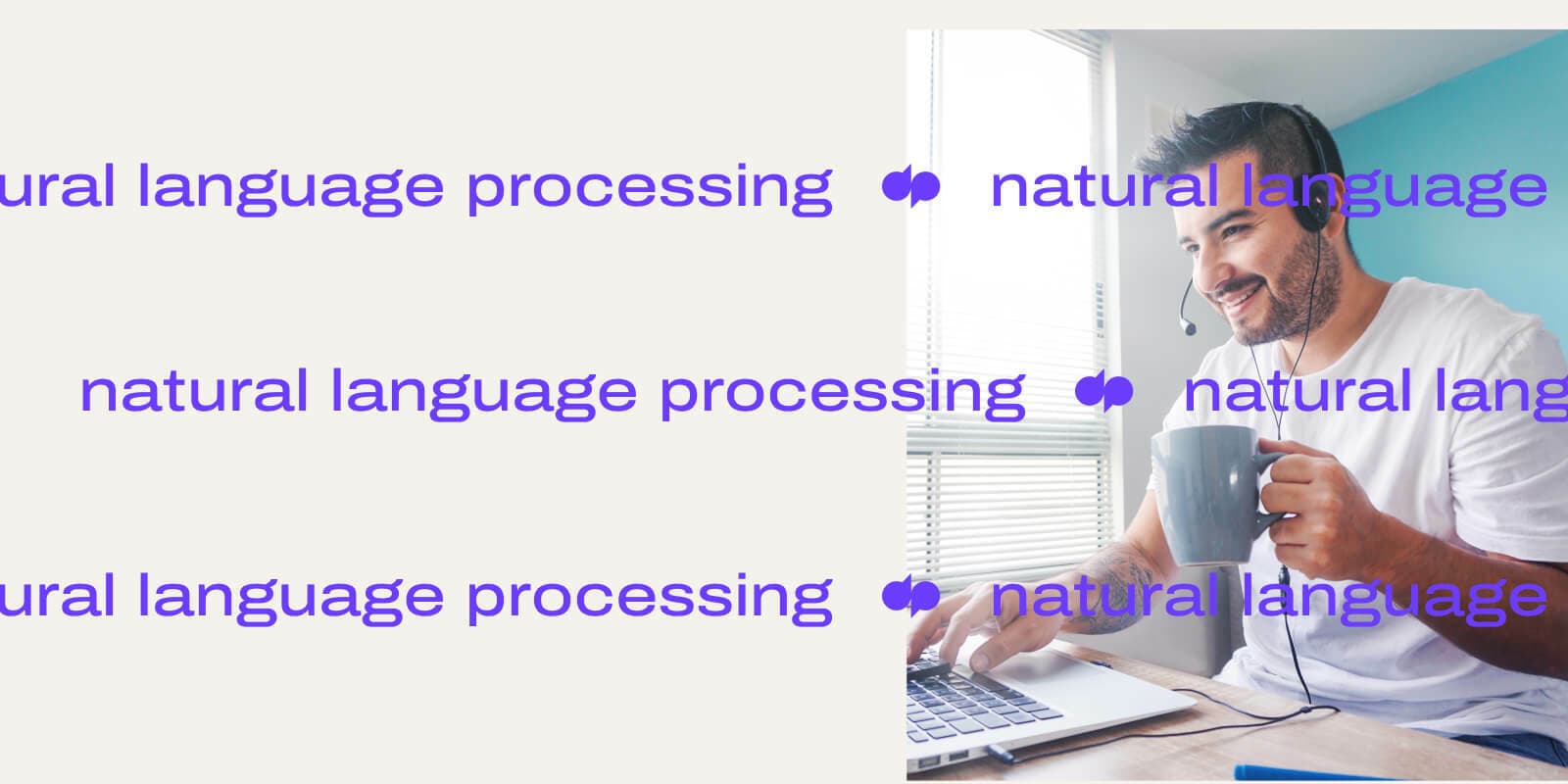
Tags
Share
There’s a lot more to a phone conversation than the words. Each sentence has specific emphasis, context, tone, and cadence—many of which are easy to miss or are misconstrued. From support calls to 1-on-1 meetings, critical information gets lost to the ether. That’s why we created Dialpad Ai, our AI that uses Natural Language Processing (NLP), and built it right into the Dialpad phone system. With careful programming, NLP understands the nuances and breadth of speech characteristics to transform it into useful information for your team.
In this article, we’ll explain what NLP is and how it can help your business in various ways, including understanding call purpose, tracking meeting action items, and revealing customer sentiment.
What is Natural Language Processing?
Natural Language Processing combines linguistics, computer science, and artificial intelligence—blending the interaction between human language and computers. Simply put, NLP enables computers to recognize the human language. It is what makes it possible for you to turn on your lights when you say, “Hey Google, turn on my lights.” But for this post, let's look at a much more complex application of NLP: phone conversations.
How can Natural Language Processing help your business?
There’s a difference between hearing the conversation and understanding the conversation. For humans, that’s called active listening (if you’re a good listener). For computers, it’s NLP. With NLP built into our phone system, Dialpad reveals new insights and helps your team—all by the magical power of listening. Here are a few examples:
Reveal customer sentiment
As we all know, a sales or support call can go south in a hurry. This is where NLP can come in and save your call.
Whether it's a price objection, a satisfied customer, or a general lack of enthusiasm—NLP can pick up on certain words or phrases to understand the customer’s sentiment. If it’s positive, that’s great! Consider using the call as a positive example in your training. If it’s negative, call center managers can choose to listen in or “barge in” on a call to de-escalate the issue, or they can use the call for future training opportunities:
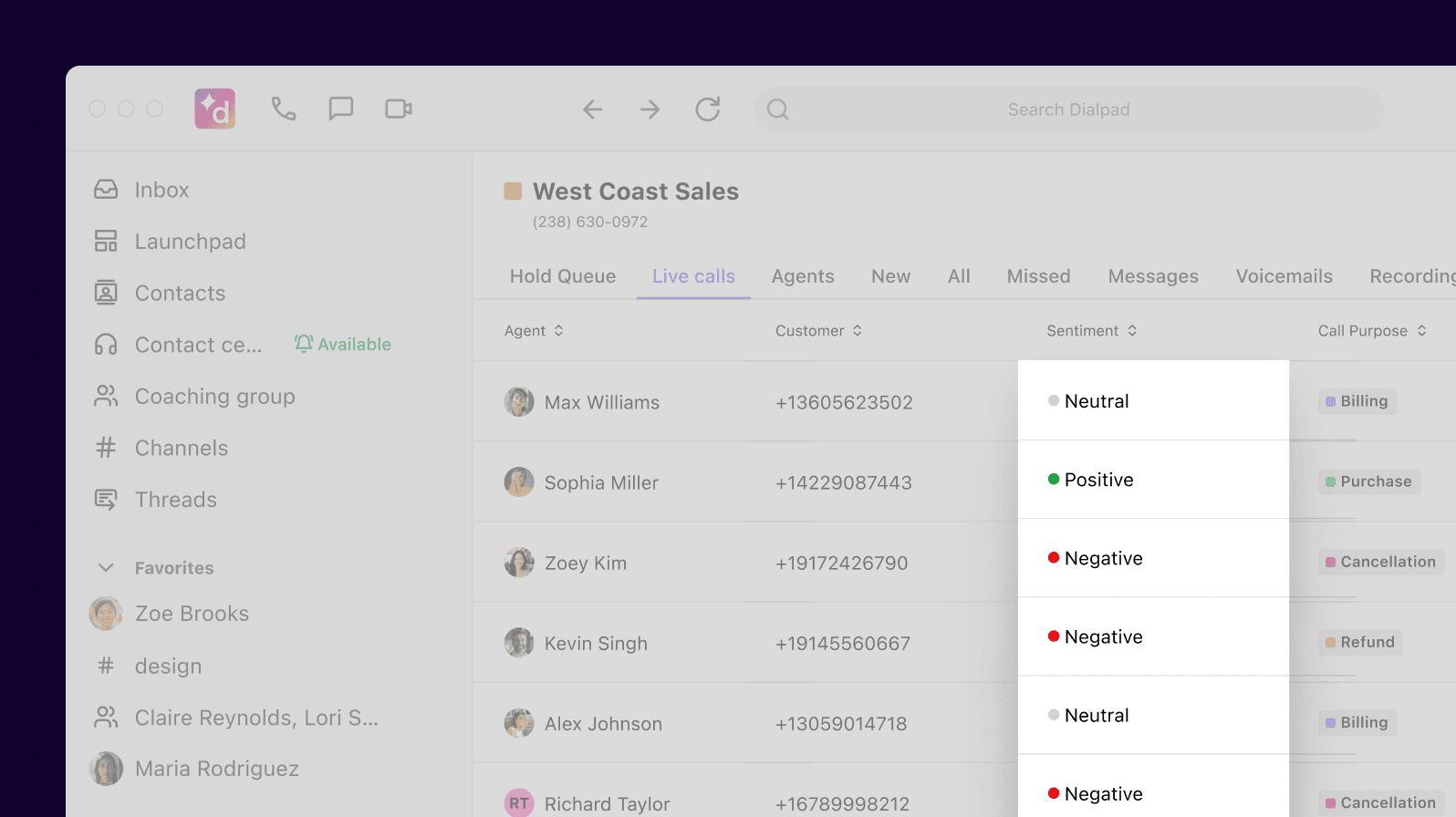
📚 Further reading:
Learn more about NLP in customer service.
Assist your team in real time
Everyone needs an assist once in a while, especially when it comes to talking to customers. Maybe the customer asks a tricky question, complains about the price, or brings up a competitor—even a veteran sales or support rep could get tripped up.
However, with NLP, you can set up “trigger” words or phrases that allow our Real-time Assist feature to pop up with the information your rep needs, when they need it—live on the call. So the next time a customer brings up that pesky competitor, is worried about pricing, or has an obscure support issue, your rep has a cheat sheet populated with feature comparisons, pricing info, or troubleshooting steps:

Capture key highlights and questions
Wait, what did they ask me to do again? We’ve all left a meeting confused, or maybe you completely missed something. It happens. We're only human. NLP can help with that. By understanding not just what was said, but how it was said, Dialpad captures action items and questions that were spoken (and by whom) during your calls and video meetings. With a post-call summary sent to your inbox, your team can focus on the call instead of taking notes and be reminded to follow up with customers, managers, etc:
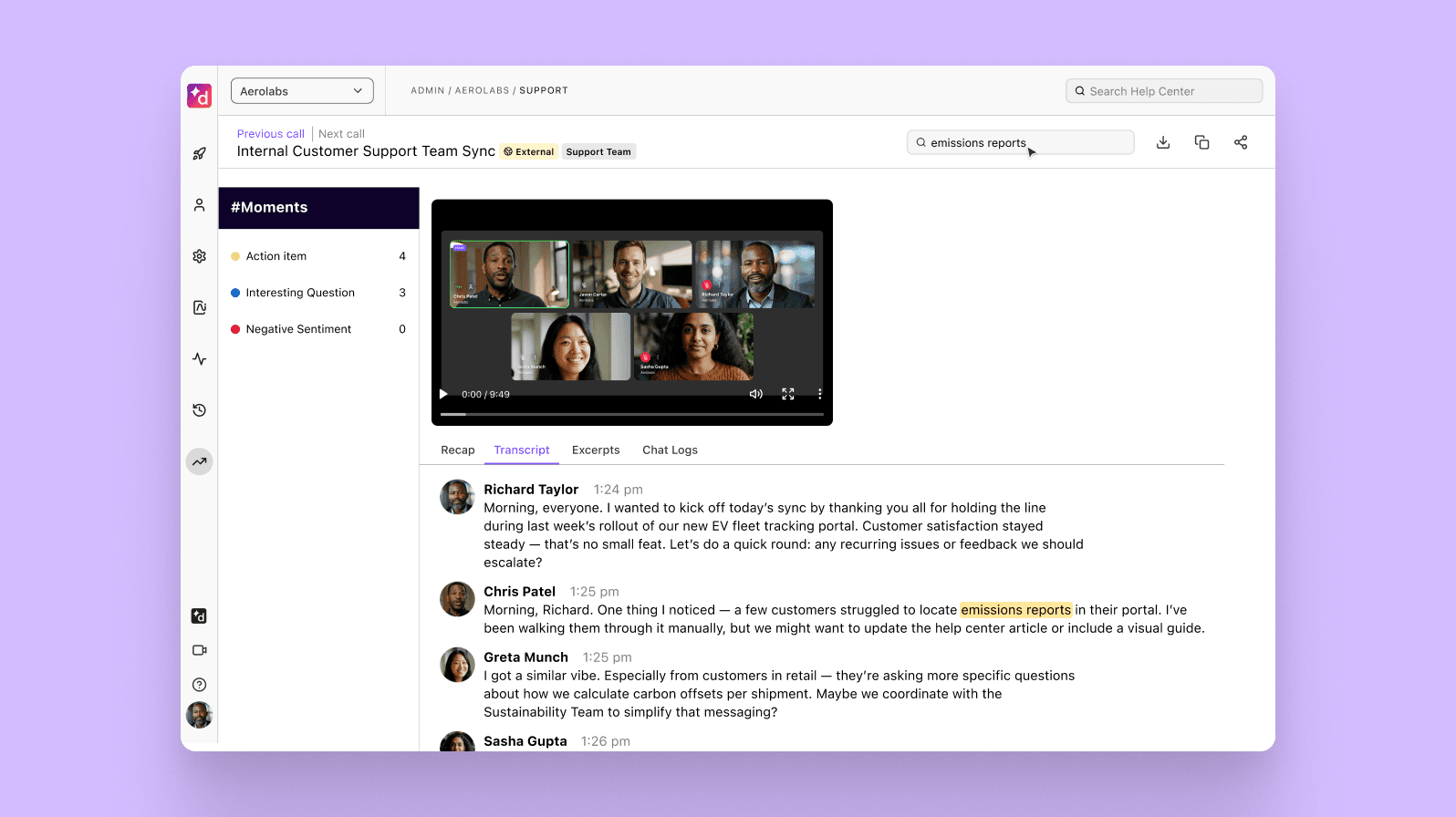
Learn why customers call
Some phone systems can track call volume, but Dialpad takes analytics a step further by automatically tracking the call’s purpose. When a phrase like "I'm calling today to see if I can get my windows washed,” our NLP identifies that as a call purpose.
So when customers call in about your latest awesome ad campaign, or about a technical difficulty or late shipment, Dialpad understands the reason and tracks it for you. With visibility into why customers call, you can find trends and better prepare your team in the case, say, many customers complain about the same shipment that just went out:
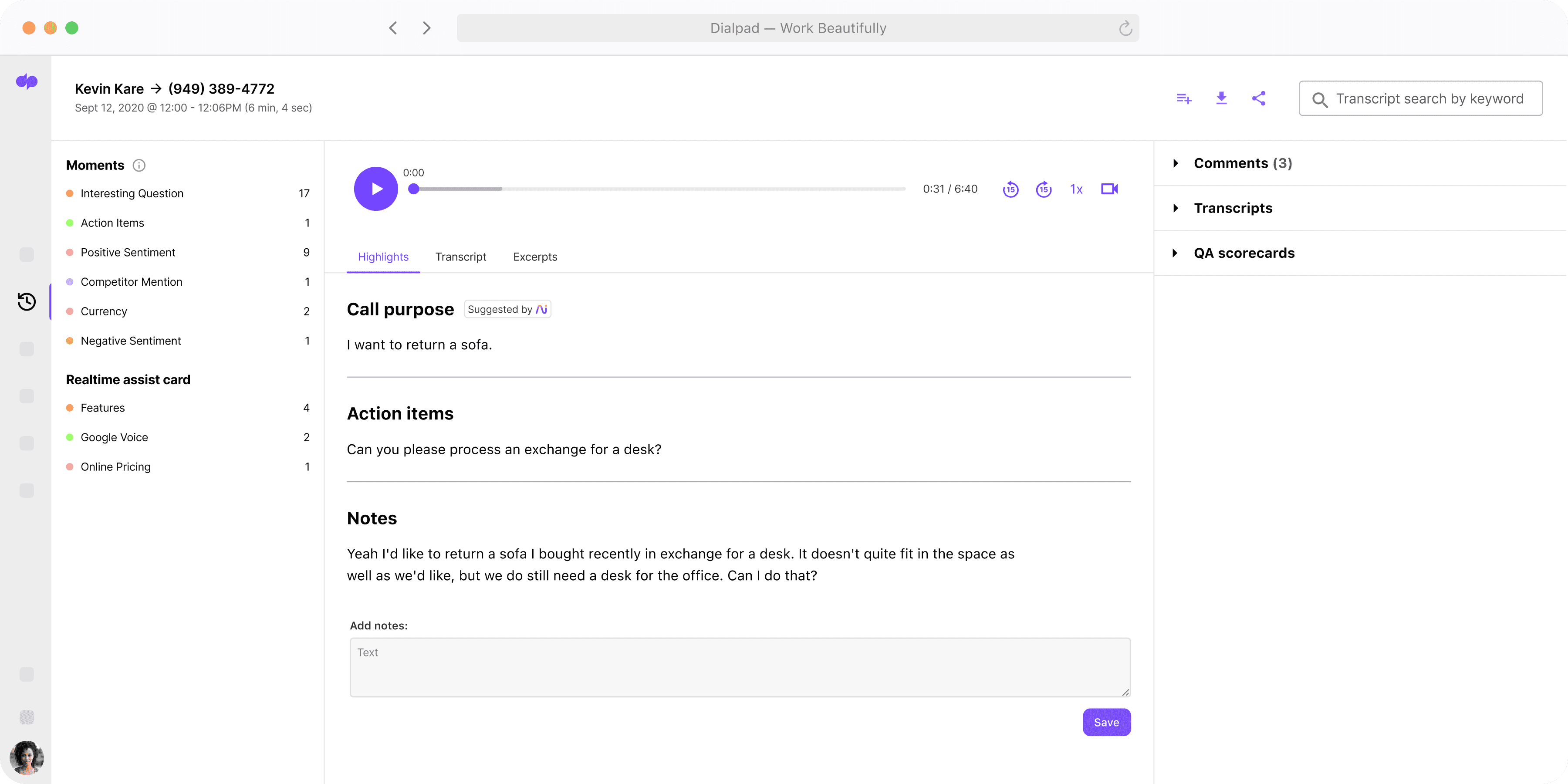
Monitor your business
Would you like to track...everything? Our Custom Moments feature uses NLP to track words and phrases of your choice. For example, you can set up a Custom Moment for competitors. When their name gets mentioned on a call, we track it:
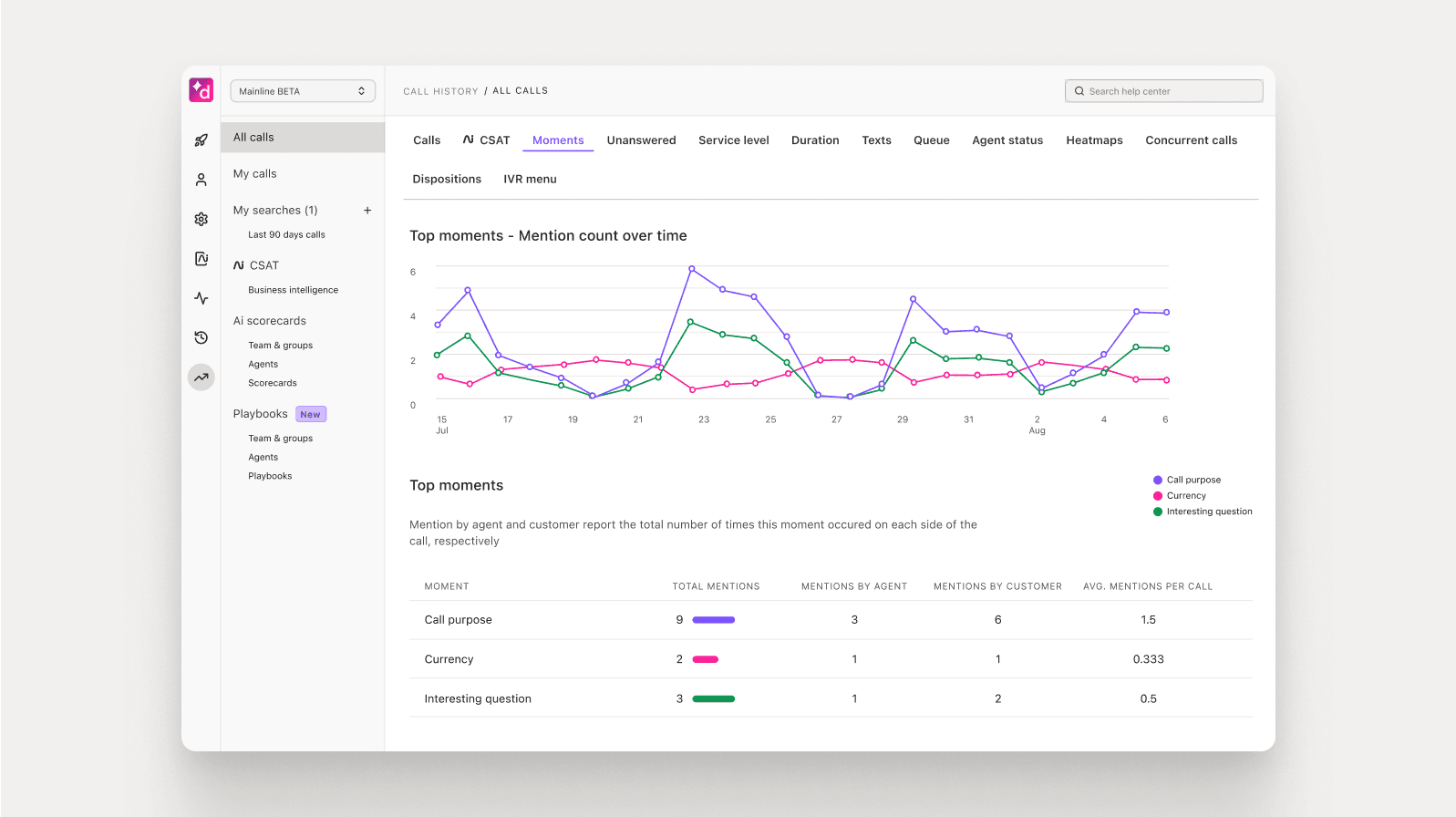
You can then use this information to see rising or waning interest in the competition, allowing you to draw up a battle plan. You can track virtually anything with Custom Moments. Dates, email addresses, frequent support issues, product names—and yes, even cuss words—can be tracked and set up with alerts so you’re informed the moment they occur.
How does Natural Language Processing work?
Ready to get a little nerdy and dig into the details? Let’s take a look at how NLP takes words and phrases and turns them into something useful.
Dissect the sentence
When a computer sees a string of text, it only sees meaningless symbols—letters, spaces, and punctuation marks. At this point, the computer doesn’t know that “cat” and “cats” refer to the same animal, or that a “bass” fish and a “bass” instrument are two very different things. It’s all just raw data.
Add rules
Proper NLP requires formal education. So how can we teach it?
Well, with a set of rules on grammar, parts of speech, and syntax. Remember in grade school where you had to fill out those workbooks? It’s like that. We use these rules to filter out possibilities and find the most likely meaning of the word or phrase.
For example, verbs typically end in “ing” and adverbs in “ly.” With strict rules, we can find subjects and objects in a sentence, group “cat” and “cats” together, know how “cat house” is different from “house cat,” and understand what “it” is referring to in a sentence like, “please bring it here.”
We can also assume words like “disappointed” are inherently negative while words like “overjoyed” are positive—and inform the NLP engine about our assumptions. But as with all rules, there are outliers and exceptions. That’s where our machine learning algorithms come into play.
Layer on the data
We can also teach the NLP engine to recognize patterns and context, much like how we learn. Humans don’t just learn by reading or hearing something. We learn by observing the response of what was said.
For example, a phrase like “I’m staying home sick” is often followed by “I’m sorry about that, get well soon.” After seeing multiple similar responses in our lives, we learn that when someone is sick, it is expected to show empathy and hope for their recovery.
To mimic this learning in our NLP’s algorithm, we feed it sample text with a predetermined meaning. We show what a conversation with an unsatisfied customer looks like. We show what a curious prospect sounds like and the words they use. We feed it conversations from a wide variety of demographics and backgrounds. We feed it data for every situation we can think of so it can better interpret similar dialogue on your phone calls.
Get context
The algorithm also learns through word association and context. Let’s go back to our earlier example of a “bass” fish and a “bass” instrument. To understand if we’re talking about fish or instruments, the algorithm reviews the other words in the sentence.
Let’s say the sentence in question also mentions “river” and “net.” By reading the definition, our algorithm finds that “nets” are used to catch fish. It can also review data sets showing that “fish” and “river” are commonly used in the same sentence, while “instrument” and “river” are rarely together.
With this data, the algorithm can assume you’re talking about the fish, not the instrument. As famous linguist J.R. Firth put it, we “know a word by the company it keeps.”
Come to an understanding
With language rules in place, data from previous interactions, and a grasp on sentence context, our NLP algorithm can begin to understand (make an educated guess). With this understanding, we can power the features we learned about above.
Final words
That was a lot to process. We hope this blog helps you understand Natural Language Processing and how it can find business insights, automate tasks, and even help your employees in real time. Remember, we’re only human. We forget things. We misunderstand. And we all have off days. For those less-than-perfect moments, Dialpad’s phone system with built-in NLP will help you get the most out of every call.
If you're a Dialpad customer, make sure you turn on Dialpad Ai so you can access the features we mentioned above. You can do so by following the easy 2-step process here.
Interested in NLP in your communications platform?
See how it works with a demo of Dialpad's AI-powered unified communications platform, or take a self-guided interactive tour of the app on your own!
